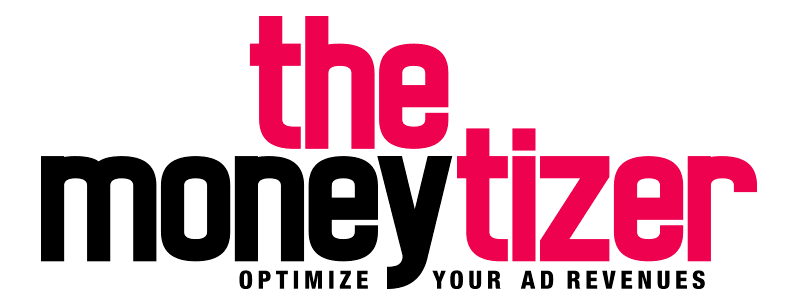Cookieless flashback… We have to go back 2 years ago to remember Google’s announcement about the end of third-party cookies on Chrome. Things have changed since then and their end has been postponed to 2023.
We can think it is a time of reflection to give more time to the online advertising field to adapt, test alternatives and set up innovative solutions.
However, some questions are raised:
· What was the context when this was decided?
· What will be the market’s reaction? Is it ready?
· What will be the impacts on the industry?
· Which challenges will we have to face with cookieless?
In this article, you will find the answers to those questions.
The context
In online advertising, the use of cookies is the basis on which the industry relied to target users and measures the impact of cross-channel advertising campaigns on their behaviors.
Then came the 2018 announcement saying that third-party cookies would be definitely erased from Google Chrome by 2022.
However, the end of third-party cookies is just the result of a movement started by adblockers and the rising demand of users to control their personal data. They want more transparency on its collection and its treatment.
Third-party cookies are the link between all the digital ecosystem actors. Let’s not forget that they’re the reason digital marketing could develop.
Indeed, they allow for the analysis of audiences, for the monitoring of users’ behaviors, for the ads personalization and the verification of performances.
The multi-websites IDs are a precious advantage for marketing specialists. They want to justify their ad spendings, but it is not appreciated by consumers who are worried about the overlay of their personal data.
In this context, the end of third-party cookies is in the interest of the user so he can have better control of his/her data sharing.
It should be said that there is a feeling of mistrust from the web users. They do not understand the purpose of tools used for commercial purposes from which they do not benefit. Here’s why recommendations were made a few years ago dedicated to regulating the market (GDPR, consent, treatment, collection, recommendations).
Today, digital marketing works with algorithms, automation, programming, because connected data is abundant.
The disappearance of cookies was predictable. That’s why other communication channels have taken over and rely on connection IDs such as mobile applications or connected TV.
Furthermore, some companies offer 100% cookieless offers.
The market’s reaction
The announced removal of third-party cookies introduces the need for the online advertising industry to reinvent itself.
We can imagine a world where the advertising inventory will be splitted in two parts. On one hand, an identified or logged inventory and on the other one, an unlogged one. Our interpretation is that the logged inventory will be smaller because a user does not log in every time they view freely available content.
We must also consider that the disappearance of third-party cookies is a huge change in an ecosystem where they were the currency. New solutions and alternatives should emerge to do intelligent targeting.
For other online advertising players, cookieless is an opportunity, as they have many built-in biases. They see this announcement as an opportunity to discover, test, compare solutions to third-party cookies to measure the differences and benefits.
The use of native data will be at the heart of the debate.
It is the ideal occasion to develop the approach of first-party data and to build a meaningful user experience without deporting them to a DMP. For the moment, first-party data are underused, but it is the way to build strong relationships between companies that have an online presence and their customers.
The focus should therefore be on creating a qualitative native database.
Indeed, exposure to the risk of deleting third-party cookies is very real for online advertising companies. It should be remembered that the cookie is free, has few associated costs, but has the disadvantage of being volatile and does not guarantee any permanence to the Internet user when he deletes it from his browser. Say bye to collected information.
All the solutions are on the table. Whether it is Google’s Privacy Sandbox or adtech open web.
Moving away from third-party cookies can allow the industry to embrace transparency and provide an additional impetus for all players in the ecosystem to collaborate. The goal is not to find a solution that is identical to third-party cookies, but a solution that puts the user first with a value contribution.
It is true that, in general, the industry has failed to explain sufficiently to Internet users the exchange value of the Internet. The habit of free access reshuffles the deck for the monetization of advertising by publishers. If advertising is not used anymore, the publisher will have to pay for access to its content…
So should you pay or accept cookies?
Identification could put the consumer at the heart of the new debate on the exchange value of the Internet. In order to see fewer ads, it could be possible to request identification by email address, hence the creation of an encrypted ID for all advertising targeting.
For others, this idea is a waste of time because the creation of a common ID is an illusion in the face of their prediction of an almost perfect watertightness of the web sites and the low percentage of logged visitors on average. The latter rely more on a contextual solution.
The most important challenge will be to integrate users to the new solutions and alternatives and to give them the choice.
The impacts of cookieless
It is certain that the removal of third-party cookies in 2023 will impact the digital marketing economy.
However, not everything will change. It will still be possible to track actions on the ad campaigns (measurement of impressions, clicks, visibility, video completion, contextual data…)
The issue is more around attribution, as it will require to:
· Prove that the ad has been delivered to the right person, at the right time and on the right website.
· Make sure the repetition is controlled.
· Will we still be able to build a conversion funnel?
The topic of identification should help regulate cookie statistics that could sometimes give the impression of overestimating the coverage of a branding campaign and underestimating the repetition based on their too large number on a single individual.
Consumers use cookieless devices more and more, so the identification solution is more adapted to the coverage of a user journey.
Let’s be positive because it’s the beginning of a new era in which advertising will become more responsible and less intrusive without altering the personalization, the relevancy and the efficiency of media.
For some, the end of cookies highlights a targeting method that is unprofitable. The IAB adds that the market is moving from a monopolistic solution, whose limitations and shortcomings are known and mastered by the ecosystem in place, to alternatives whose objectives and performance differ and cover only part of the functionality of cookies.
As we mentioned before in this article, no alternative can entirely replace third-party cookies. At first, it will be necessary to use different solutions to make a decision.
This change will impact all elements of digital:
· The media activation,
· The campaigns management with frequency capping,
· The reporting,
· The measure and the attribution.
It is expected that the volume of retargeting campaigns will decrease. We are going to witness an amplification of logged and unlogged user data through lookalike features applied to unlogged visitors. The contextual targeting should therefore be brought to the forefront.
Tracking should be totally rethought to give way to 100% cookieless solutions.
Also, semantic contextualization is a topic considered by some players to compete with unique identifier and first-party data to help publishers identify new audience monetization solutions.
All those strategies changes around data should be an opportunity for advertisers to fidelize their customers.
Cookieless will have an impact on the perception of internet users on a daily basis, moving from online privacy as a legal and compliance issue to the ability of brands to build customer loyalty.
The challenges
Once we reached the cookieless era, what will online advertising look like?
The first challenge will be around performance, because that’s what advertisers want. It will probably require a rethink of how advertising analysis and targeting is done.
To do so, some players highlight the use of contextual targeting and semantics that are free of technological and regulatory constraints.
For others, it goes beyond techniques and technologies. Cookieless creates a challenge to reorganize and restructure the industry. It is more a question of initiating the shift and proposing non-intrusive and effective targeting and personalization methods.
The goal is to win back the user’s trust by putting him at the heart of the advertising ecosystem. Make an effort to educate users so that they become loyal and accept to identify themselves and give part of their data to have access to quality content. Because they will have the choice to be exposed to targeted advertising.
The second challenge is the respect of private life. It is important to make sure that users will benefit from an experience adapted to the use of native data. For the time being, internet users still feel preoccupied with the collection and the use of their data.
Trust is also about measurement. The market will have to adapt to this new way of understanding a website’s performances since the cookie will be obsolete.
The disappearance of cookies could develop the TV digitalization. There is a gap between the fact that cookies are not multi-screens and the habits of consumers on this device. The identification strategy should integrate TV in the digital mix media strategy.
Finally, the last challenge lies in controlling the carbon impact of the internet and of advertising. Programmatic requires a lot of infrastructure for a single display and consumes a lot of energy. Unfortunately, digital technology is increasingly polluting, so it is essential to consider more sustainable and environmentally friendly technologies.
Without the online advertising industry expecting it, Google has extended the deadline for the use of third-party cookies on its Chrome browser to 2023.
The IAB says it supports the decision even though the Privacy Sandbox is not ready for deployment.
There are a lot of expectations for the future tools proposed by Google and we hope they will match the needs of users as the ones of other market players.
For others, cookieless isn’t a major revolution since the absence of cookies is a reality for a great part of the Internet traffic and represents a strategic focus. It is mostly the legal and social pressure that remains strong.

